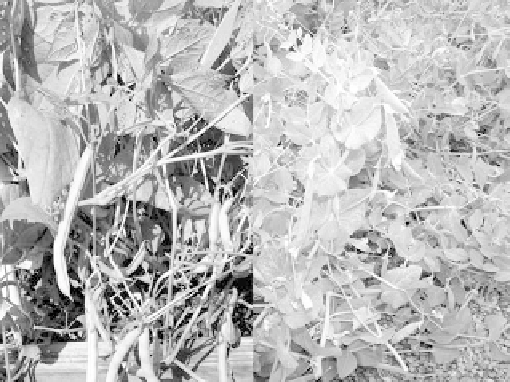Agriculture Reference
In-Depth Information
82 to 94 percent of the world production. These estimations are made on the basis the
production of lettuce and spinach.
§,2
4.8
IMMATURE SEEDS AS VEGETABLES
Peas, beans (Fig. 4.15), and maize are commonly grown to maturity and the seed used
as food. Just as commonly, these crops are not allowed to mature, and the immature
seed and sometimes the seeds and associated pod, as with snow peas and beans, is
eaten. Peas and beans are eaten both cooked and fresh; however, maize is almost
always cooked by either boiling or roasting before eating.
4.8.1 Climatic Adaptation
Immature seeds used as vegetables are grown in a variety of climates; see Table 4.4.
Peas require cool climates, either as cool days and nights or warm days with cool
nights. In contrast, beans and maize require warm climates and grow even in tropical
climates. They will also grow in cooler climates as long as the growing season is
long enough to allow for grain development. Note here that the grain is eaten in the
immature stage, and so the growing season does not have to be long enough to
produce mature seeds.
4.8.2 Importance in Human Nutrition
Figure 4.16 shows the nutrient content of beans, peas, and maize. Note that the scale in
this graph is different from the other vegetables because both peas and maize have a
Figure
4.15.
Green beans, left side, and peas, right side, at stage to be picked as vegetable.
§
Calculated from FAOSTAT (http://faostat.fao.org) data for 2004 and 2005 on the basis of hectares.









